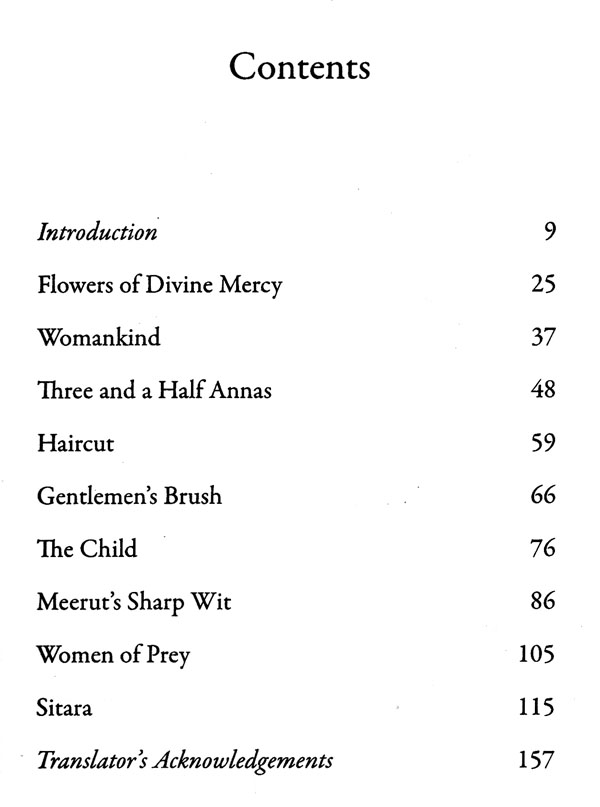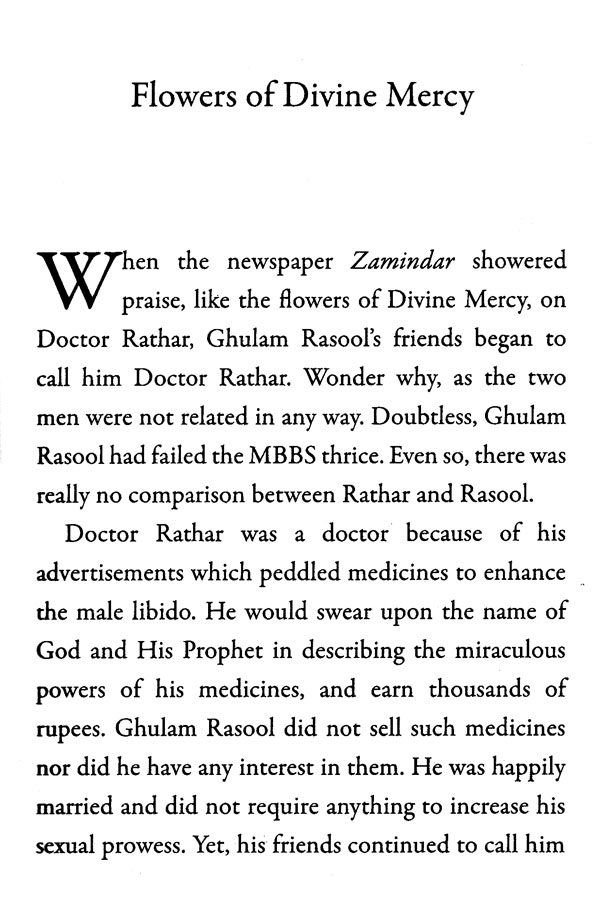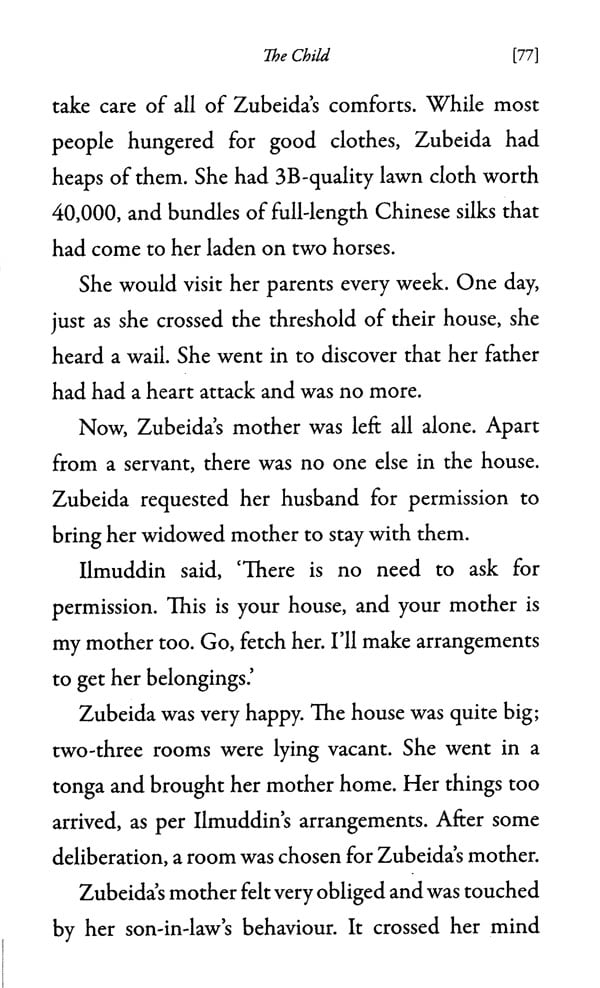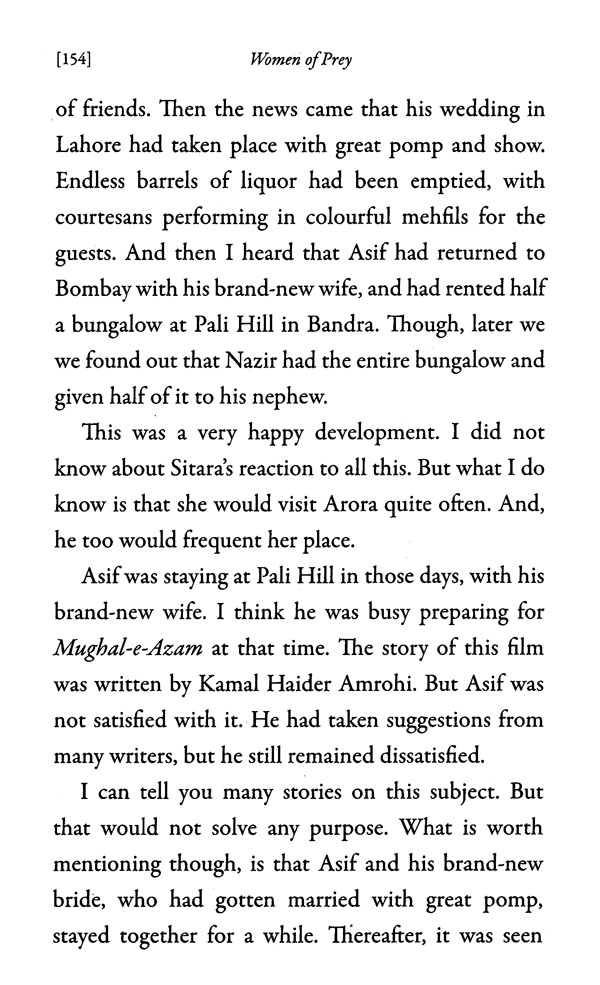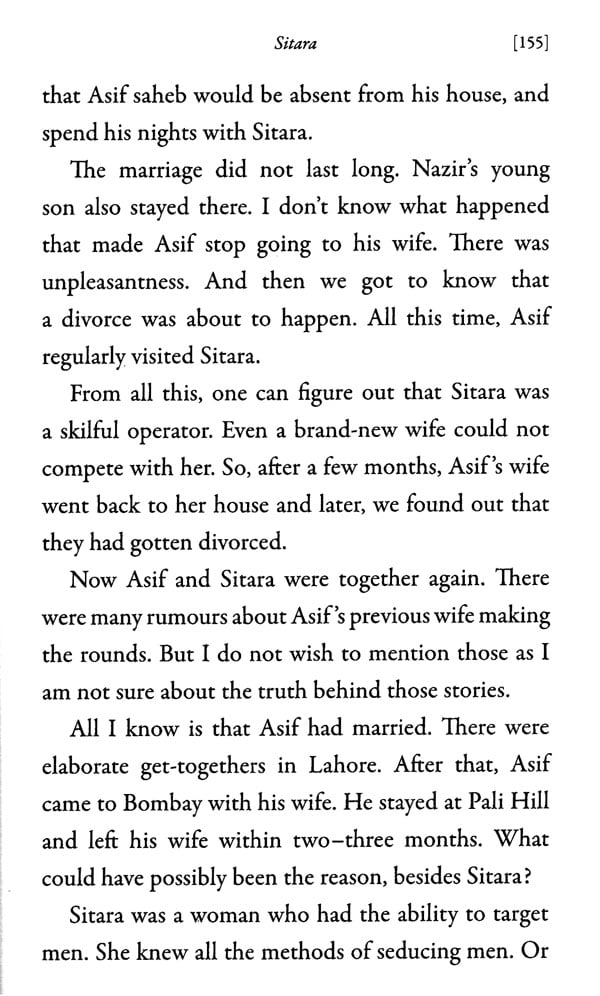
Women of Prey (Shikari Auratein)
Book Specification
| Item Code: | NAZ579 |
| Author: | Saadat Hasan Manto |
| Publisher: | Speaking Tiger Publishing Pvt. Ltd. |
| Language: | English |
| Edition: | 2019 |
| ISBN: | 9789389231328 |
| Pages: | 160 |
| Cover: | PAPERBACK |
| Other Details | 8.00 X 5.00 inch |
| Weight | 140 gm |
Book Description
Originally Published in 1995 as shikari Auratien, Women of Prey is a hugely entertaining and fogotten classic containing raunchy, hilarious short stories and profiles that shows a completely different side of Manto.
As he's enjoying a kulfi in his Victoria coach after a long day at filmistan, a beautiful buraq-clad woman suddenly hops in nest to manto, ready to go home. What will he do next?
When Ashok stumbles across a porn film for the first time in his life, he is appalled. What will happen when his wife gets hold of the contriband?
Will two bitter lovers-- about to give it all up-- resolve their differences, before they take each other's life?
Can Ashok Kumar, heartthrob to million of women, handle Paro Devi's affections?
In addiction to these stories, this volume also incluedes'Sitara',Manto's scandalous profile of the legendary Kathak dancer, famous for her troop of lovers. Appearing in English translation for the first time ever, this gem of a collection is a gloriosly pulpy,sexual, hilarious and tragic romp through Manto's Bombay, Lahore and Amritsar.
Saadat Hasan Manto, a proud Kashmiri, was the most widely read and the most controversial short-story writer in Urdu. He was born on 11 May 1912 at Samrala in Punjab’s Ludhiana district to a family of barristers. In a literary, journalistic, radio-scripting and film-writing career spread over more than two decades, he produced twenty-two collections of short stories, one novel, five collections of radio plays, three collections of essays, two collections of personal sketches and many scripts for films. He was tried for obscenity half a dozen times, thrice before and thrice after Independence. Some of Manto’s greatest work was produced in the last seven years of his life, a time of great financial and emotional hardship for him. He died several months short of his forty-third birthday, in January 1955, in Lahore.
Saadat Hasan Manto (1912-1955) has always been an enigma. For those who have read him a lot, and even for those who have read only a couple of his stories, or just heard about his colourful personality. Even after the 2015 film Manto, directed by Sarmad Khoosat, and the acclaimed television drama Main Manto in Pakistan, followed by the biopic by Nandita Das in India, the mystique around the author persists. And as often happens with legends, Manto has also been stereotyped in the popular imagination—in his case, pigeonholed as a troubled genius; a rebel with the terrible gift of ‘madness’ who only wrote dark and disturbing stories. Manto’s name has come to be synonymous with his short stories set around the Partition, like ‘Toba Tek Singh’ ‘Kaali Shalwar’, ‘Boo’ and ‘Khol Do. Unfortunately, these few stories have eclipsed the complexity, range and versatility of his work. Manto’ case is similar, to an extent, to that of his contemporary Ismat Chughtai, who is identified more with her ‘controversial’ story ‘Lihaaf’ than any of her other masterpieces. Readers have rarely appreciated the complete oeuvres of these two masters of Urdu literature.
I too did not know much about the vast body of Manto’s work, apart from the well-known Partition stories which I first read in translation. I only came across his ‘Sketches’ about a decade back, which led me to his writings in various other genres. The ‘Sketches’ were profiles of Ismat Chughtai, Noor Jehan, Nargis, Ashok Kumar and other famous literary and film personalities. In these pieces, Manto was characteristically blunt, even brutal. He wrote what he saw, without mincing any words. Next I read his ‘Afsanche’ or micro-fiction, as it is called today, with its subtle humour and power, and my journey with Manto got more interesting.
Women of Prey comprises mainly stories that were first brought together in 1955 in a collection titled Shikari Auratein. These stories and sketches show a completely different side of Manto—raunchy, mercilessly funny and gloriously pulpy, even when they end in tragedy. These are women trying to pick up men on the streets, women asserting their desire, and men being men and, almost always, fools or hypocrites; enterprising alcoholics, honest thieves, and tragic, talented hustlers. For those who know Manto only for his heart-wrenching Partition stories, this book shows a different genre of writing, presenting him as an accomplished writer of pulp fiction and comedies of manners, as well as a caustic columnist.
Most of the stories in the original manuscript are dated around 1950 and are set in Lahore, Amritsar and Bombay. The themes are entirely ‘Mantoesque, but the treatment is rather different from what many readers have been trained to expect from him.
The first story in the present volume is ‘Flowers of Divine Mercy’, which is about a man who, unable to get his daily drink in peace, comes up with an ingenious plan to drink at home—without his wife knowing. A similar tug-of-war relationship of a couple is on show in ‘Haircut’ (‘Hajamat’ in Urdu; its clever sexual innuendo near impossible to capture in English). Both these stories largely progress through simple, but crackling dialogue between the characters. "Womankind’ is about the shenanigans that ensue when a pornographic film is brought to India in the 1940s, and it comes into the life of an unsuspecting married couple.
Manto has often been criticized for writing ‘smutty’ stories, and stories about sex workers where he makes no attempt at morality, or even political correctness. His argument was that sex, including transactional sex, is an integral part of society and there is no reason why it should be banished from literature. The title story in this book is a series of vignettes, or anecdotes, where Manto or a Manto-like protagonist describes encounters with different women cruising the streets of Lahore and Bombay for men. They are fearless and audacious. Nowhere does Manto mention that these women were prostitutes. He portrays them as independent, single women, alone at night or in the day, taking lifts from men they do not know. In fact, the only story where prostitution is hinted at features aman.
Book's Contents and Sample Pages
